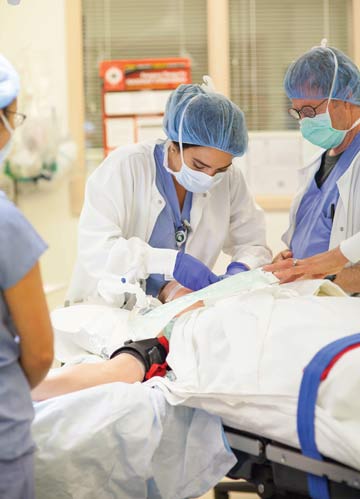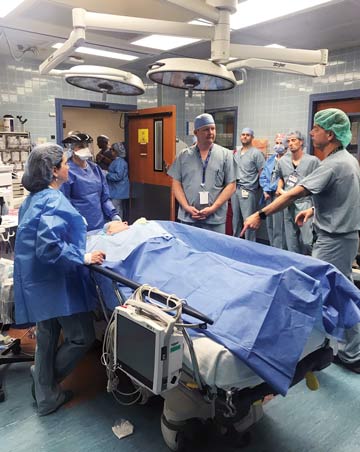There's arguably no more dangerous task in surgery during the coronavirus pandemic than intubating patients. Anesthesia professionals work inches from the airway, in the direct path of aerosolized virus particles, as they attempt to insert a laryngoscope blade while decked out in gloves, gowns, N95 masks and face shields.
"COVID-19 has complicated airway management," says Michael Aziz, MD, a professor of anesthesiology and medicine at Oregon Health & Science University in Portland. "Providers must protect themselves with several layers of PPE, which makes the job more physically demanding. Communication is hampered and visualization is more difficult."
The coronavirus outbreak serves as a reset for anesthesia, according to Roxanne McMurray, DNP, APRN, ?CRNA, a clinical assistant professor at the University of Minnesota School of Nursing. "Providers must be more vigilant when securing the airway," she says. "The current challenges will force us to up our game, and that's a good thing."
The use of video laryngoscopes has increased significantly during the pandemic among providers who are increasingly worried about their proximity to the patient's airway, according to Dr. Aziz. "The devices were gaining a stronger foothold because clinical evidence shows higher rates of first pass intubation success," he says. "Some providers had already been using them universally. Many who weren't are now discovering the benefits they provide."
Video laryngoscopes, which provide direct views of the glottis to make intubation much easier, have evolved since first being introduced as a "game-changing" technology about a decade ago. The latest generation of devices are more ergonomic and portable, and feature high-definition imaging that provides clearer views of airway anatomy. They also accommodate various laryngoscope blade designs. Dr. Aziz says providers often use standard blades for routine intubations and acute angle blades to secure anticipated difficult airways.
Screen size matters most to Dr. Aziz. "Units with smaller, attached screens are priced competitively, but the visualization and magnification capabilities afforded by larger screens allow for improved intubation performance," he says.
Dr. Aziz also points out devices with larger, detachable screens let providers keep a healthy distance from the airway. "We're never certain about who's shedding the coronavirus, even with testing in place," he says. "Video laryngoscopes with separate monitors that can be positioned next to the patient let providers stand upright while intubating instead of leaning directly over the airway to perform direct laryngoscopy or manipulate a video laryngoscope with an integrated screen."
Changes in intubating practices during the COVID-19 outbreak could hasten the adoption of these tools, which many providers believe should be the gold standard of airway management. "I still teach direct laryngoscopy to new nurse anesthetists, but video laryngoscopes are fabulous tools," says Dr. McMurray. "There's no doubt video laryngoscopy is developing into the standard of care."
.svg?sfvrsn=be606e78_3)


.svg?sfvrsn=56b2f850_5)